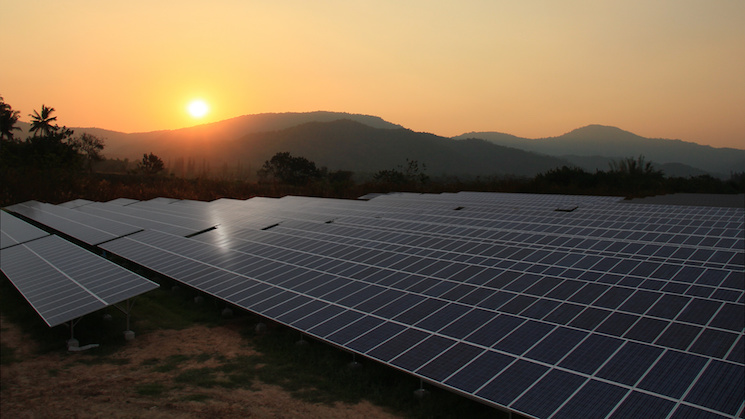By Seth Masia July 1, 2009


To boost daily output of a photovoltaic (PV) panel by about 30 percent, it can be made to pivot, following the sun’s progress across the sky.
Near the equator, where days are of nearly equal length through the year, a simple timer or clockwork mechanism can do this. In temperate latitudes, it’s better to use a servo motor controlled by an aiming circuit.
The aiming circuit uses two photosensitive cells pointing east and west, or separated by a vertical panel that can shade one or the other cell. The cells are wired together so that when light falls equally on them, they produce no output voltage. When one cell produces a stronger current, the motor gets a signal to rotate the panel in that direction. When the current equalizes, the panel is pointed straight at the sun and the motor shuts off.
In large arrays, rows of PV panels can be mounted on horizontal pipes laid north to south. The control motor rotates the whole row around its mounting pipe from east in the morning to flat at noon to west in late afternoon. Conergy’s 1.6-megawatt array at Manteca, Calif., is laid out this way. David Vincent, Conergy’s project development manager for the Western United States, said, “Instead of using an aiming circuit, we control tracking with a computer that knows where the sun is all the time. That works better for us because it knows where the sun is regardless of weather conditions. When the sun reappears, the modules are pointing in the right direction.”
Early and late, when the sun strikes the array at a low angle, each row of modules casts a long shadow. Rows must be located far enough away from each other to be out of their neighbors’ shadows. For this reason, a single-axis tracking array covers about 20 percent more real estate than a fixed-mount array of equal area. At the Manteca facility, Conergy programmed the computer to “backtrack” the modules: They lie flat at dawn and dusk, thus minimizing shadows. Once the sun climbs high enough that shading is no longer a problem, the modules rotate to the 45 degree position and begin to track.
Tracking isn’t practical for most rooftop arrays, Vincent said, because of structural issues. Tracking systems weigh about 20 percent more than fixed racks, and because they’re taller, they “sail” in the wind, creating a torque at the base of each mounting post. “Most roofs can’t handle it,” he said.
Dish collectors must point straight at the sun and thus need two-axis tracking, which adjusts automatically for seasonal sun height as well as for daily traverse. In a flat-plate installation, a second axis typically boosts output by only 6 percent and is not often considered economical.
Parabolic troughs used for concentrated solar thermal arrays are aimed with single-axis systems. Support structures must be stiff to keep the troughs precisely focused.
Seth Masia is managing editor of SOLAR TODAY. Contact him at smasia@solartoday.org.




